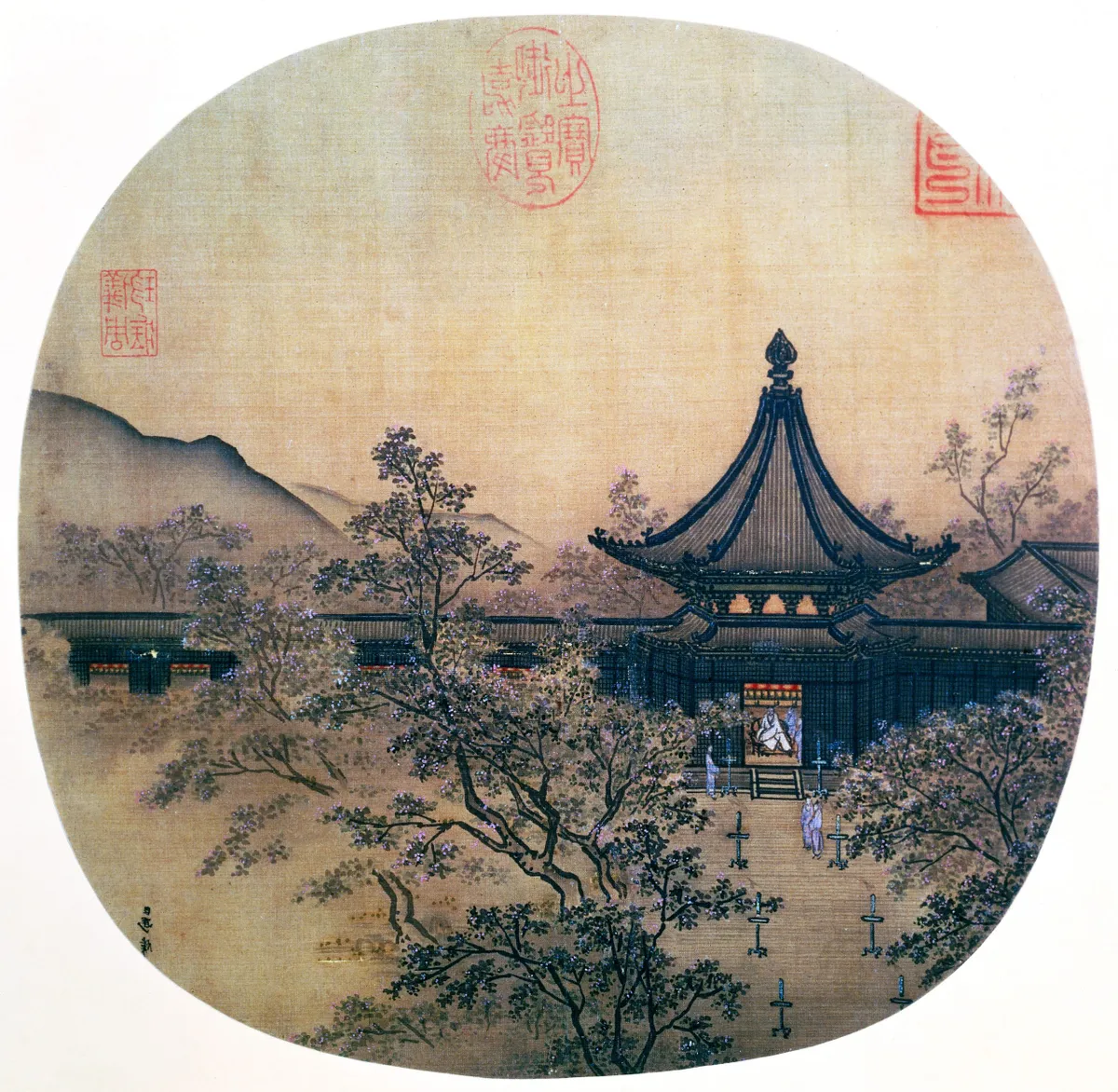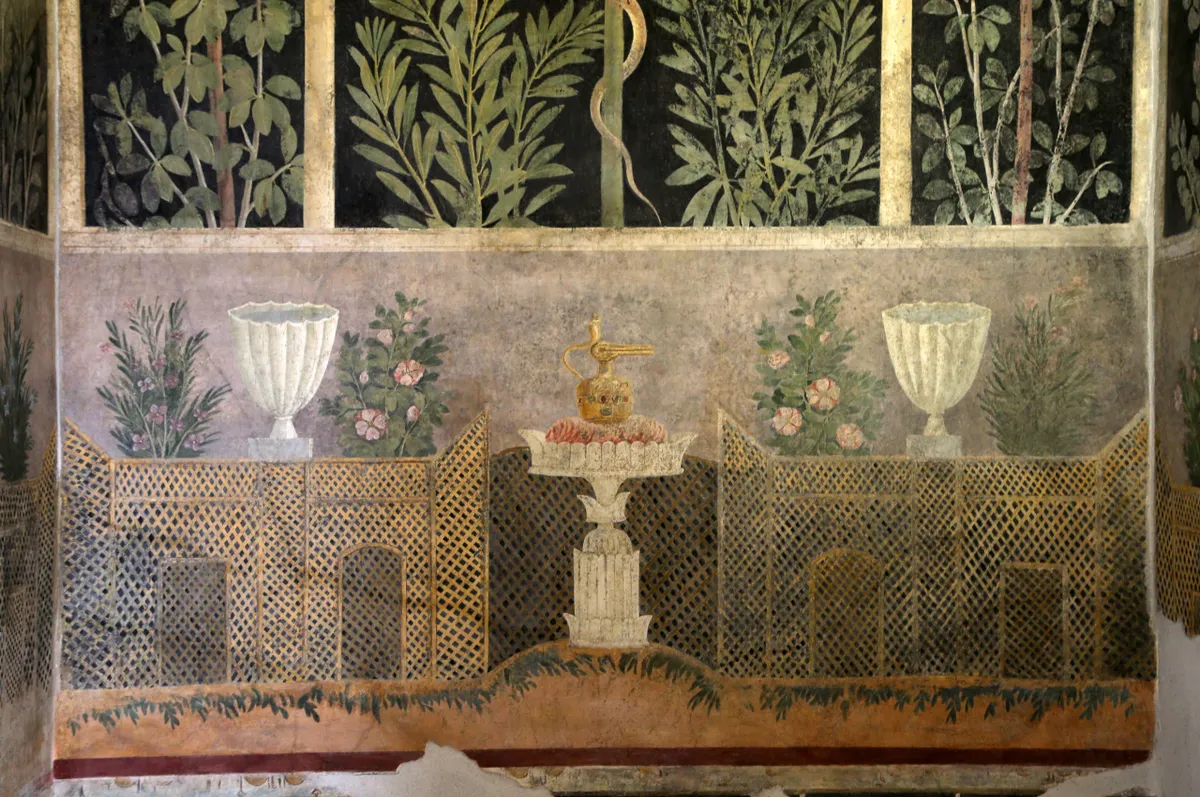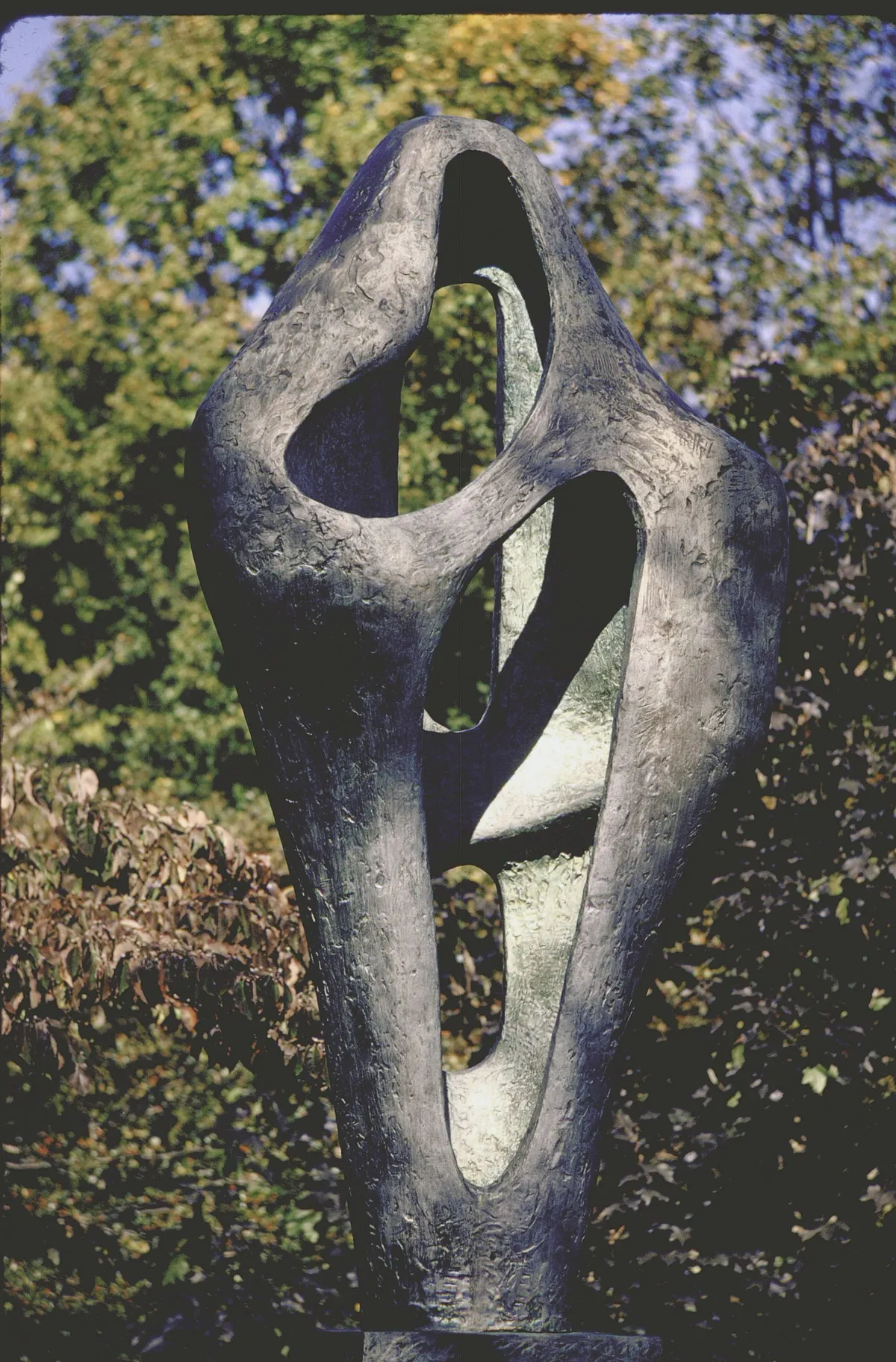From depictions of the Garden of Eden to the propaganda 'Dig for Victory' posters of the Second World War; paintings of gardens have conveyed a multitude of messages throughout history. They can represent the beginning of life, symbolise love and passion and they can, perhaps most fundamentally, relay a space of comfort, reliance and hope. Here are 15 significant works of art that show a garden frozen in time, with a story to tell.
Classical garden artworks
A painting in the Tomb of Minnakht, c 1550-1295 BC

This Ancient Egyptian wall painting shows a luxurious villa in Thebes within a grand garden, planted with trees including a Sycamore. The latter’s wood was used for making coffins for mummies and was often planted near sacred sites. Although not shown in this particular painting, gardens from this period generally stuck to a design of a central pond with colourful fish, rows of trees and a mixture of flowerbeds.
Ancient Greek vase painting depicting Garden of Hesperides, 4th century BC
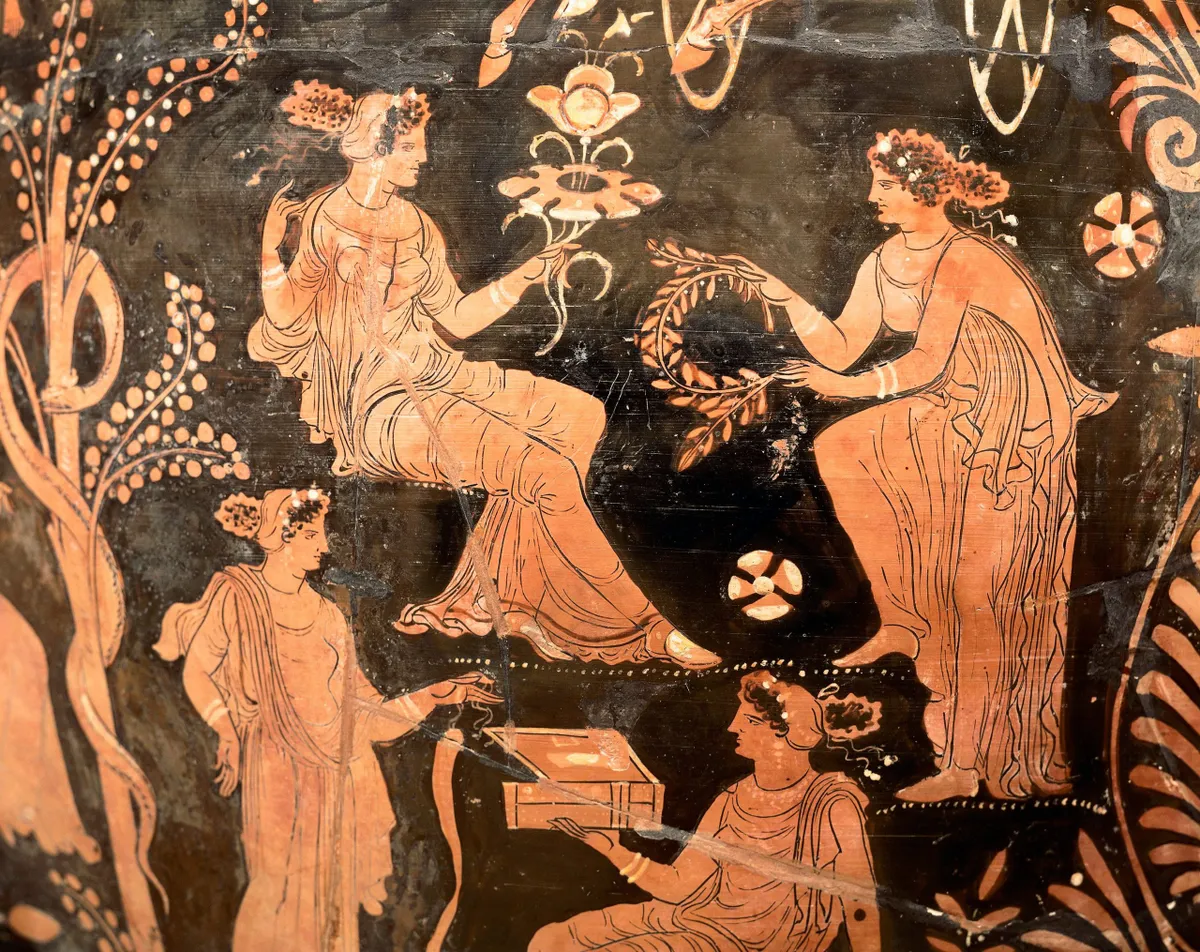
The scene on this Attic vase depicts a mythical garden; the Garden of the Hesperides, which is widely interpreted as the Ancient Greek version of the Garden of Eden. Notice the serpent-entwined apple tree, which is guarded by Hesperides, the nymphs dedicated to the preservation of it. Although there are mentions of sanctuary gardens and pleasure gardens in literature from the time, and ruins of buildings and temples help to give us an idea of what their gardens might have been, there is little evidence on how a typical Ancient Greek garden would have actually looked.
Frescoes in the Orchard House, 1st century BC
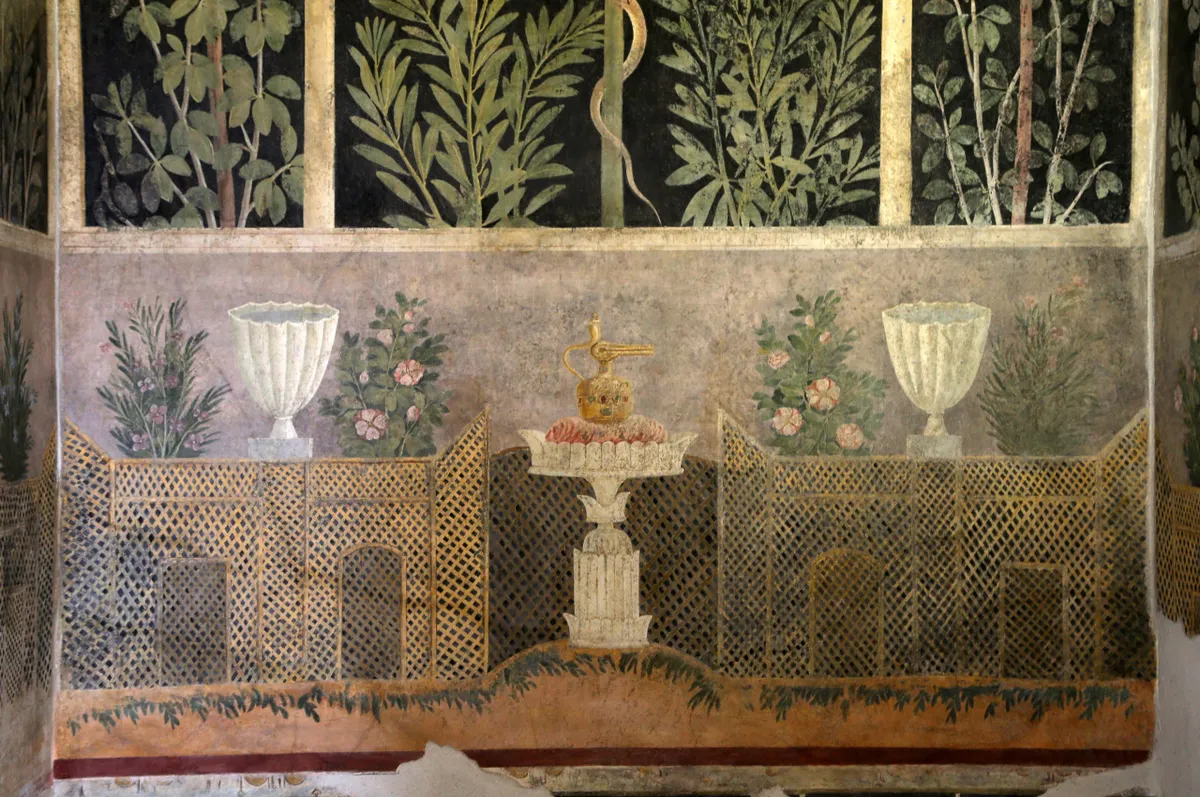
This fresco is from the Orchard House, or Casa del Frutteto, in the ruined Roman town of Pompeii, Italy. The house takes its name from the painted fresco which depicts lemon trees, pear trees, cherry trees, fig trees and plum trees, amongst ornamental stone urns and statues. Frescoes of gardens were very common in Pompeii villas and often adorned rooms where guests would be welcomed and entertained. The Romans are credited with bringing the Persian garden style to Europe, which favoured arid climates and were usually enclosed, as is illustrated here.
Medieval
Waiting for Guests by Lamplight by Ma Lin, c 1250
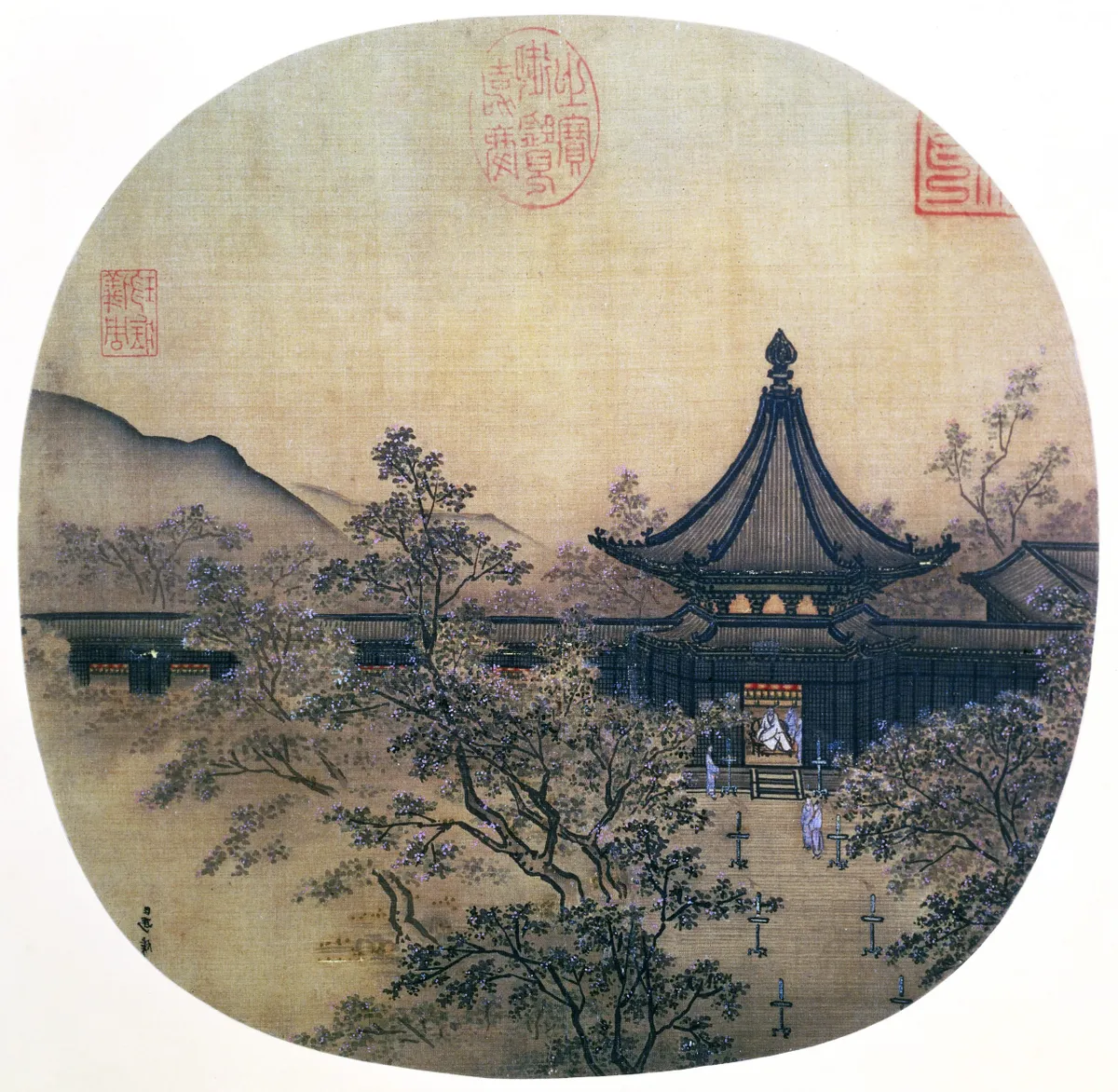
This ink painting on silk depicts a traditional imperial Chinese garden from the period of the Song Dynasty. From the light of the moon, we can see delicate purple blossoms on the trees in the courtyard and a row of torches light the path up to the open door of the palace. Typical features of an imperial Chinese garden were ponds, rock features, winding paths and pavilions, all enclosed by walls to create the sense of a small-scale, model landscape where one could feel safe and at peace with nature.
Garden (From Regia Carmina di Convenevole da Prato) by Pacino di Buonaguida, c 1302-1343
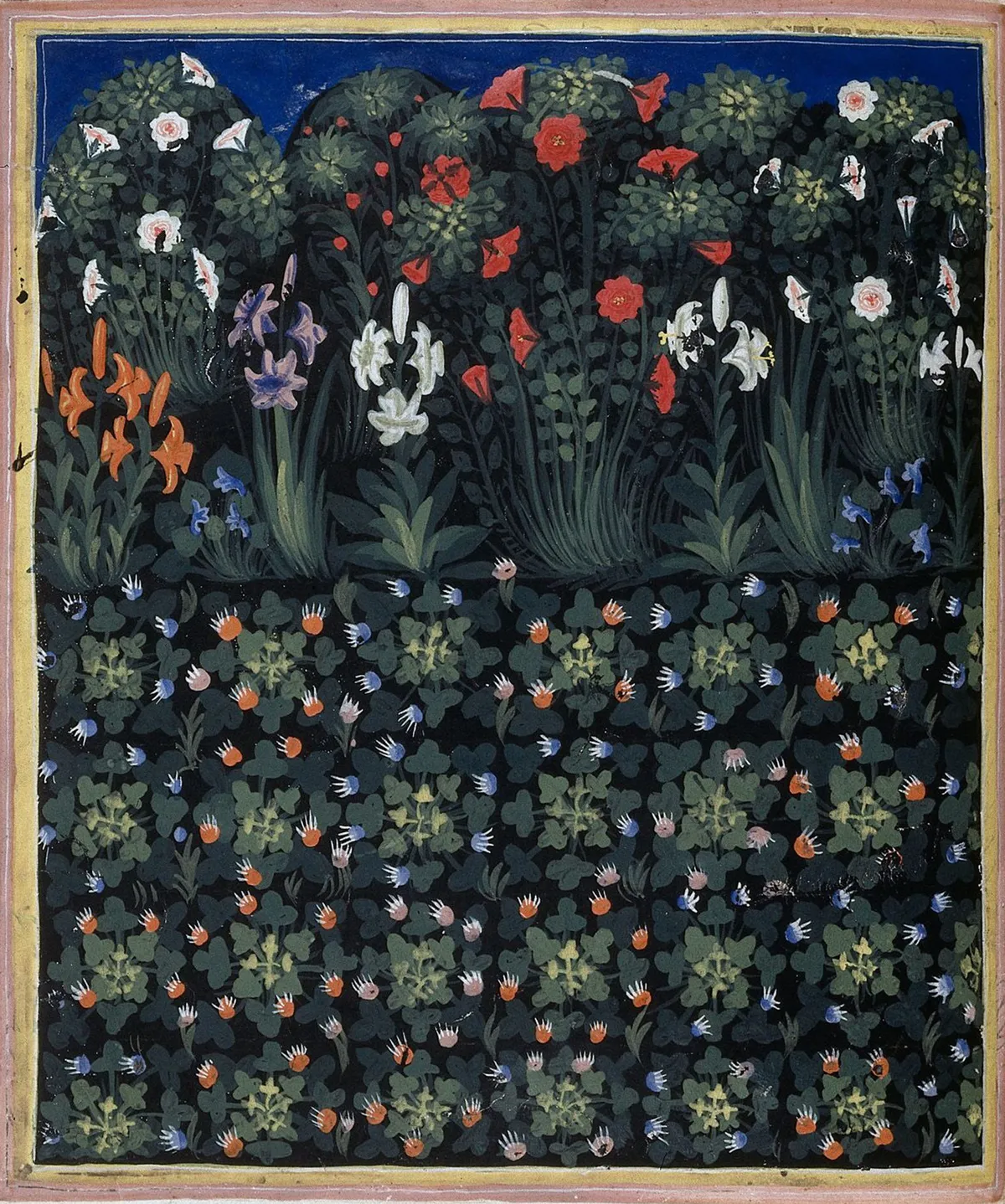
This 14th-century Italian painting is from a Latin manuscript gifted to the King of Naples, Robert of Anjou. This particular painting depicts a garden in full bloom in Prato, Tuscany. It may have been a medicinal garden, typical in medieval times, or an ornamental garden for relaxing and entertaining guests. The low-growing wildflowers on the grass are characteristic of a European medieval garden.
The Garden of Love (or The Fountain of Life) by Leonardo Dati, 1470
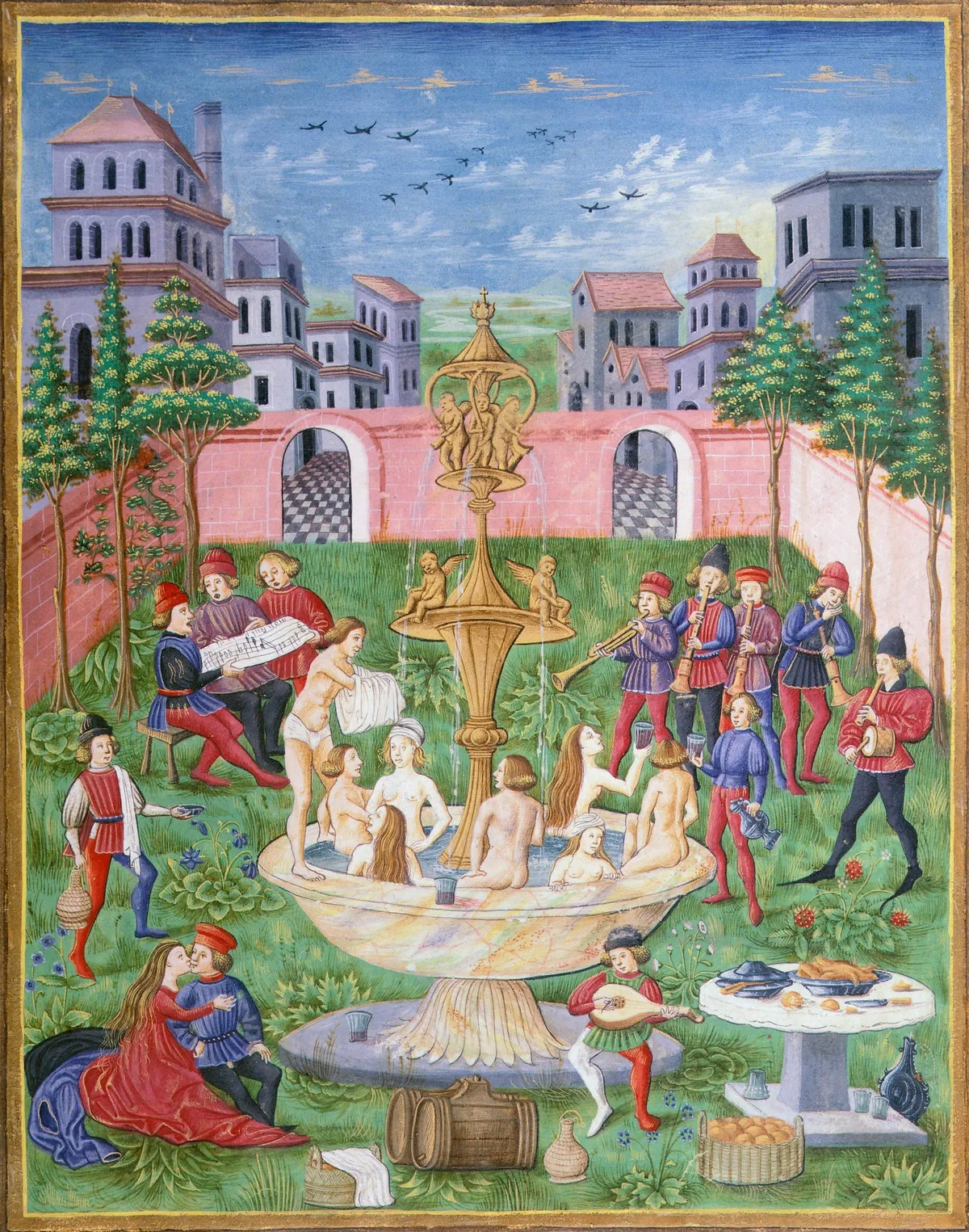
This fictional depiction of a medieval garden by the Italian friar and humanist Leonardo Dati is symbolic of courtly love, a theme often appearing in secular artwork from the beginning of the 15th century in Europe. These images were a world away from the religious depictions of the Garden of Eden; instead, they celebrated indulgence and romance, as symbolised by the blossoming trees, flowery meadow and elaborate fountain.
Renaissance
The Garden of Earthly Delights by Hieronymus Bosch, 1490-1510
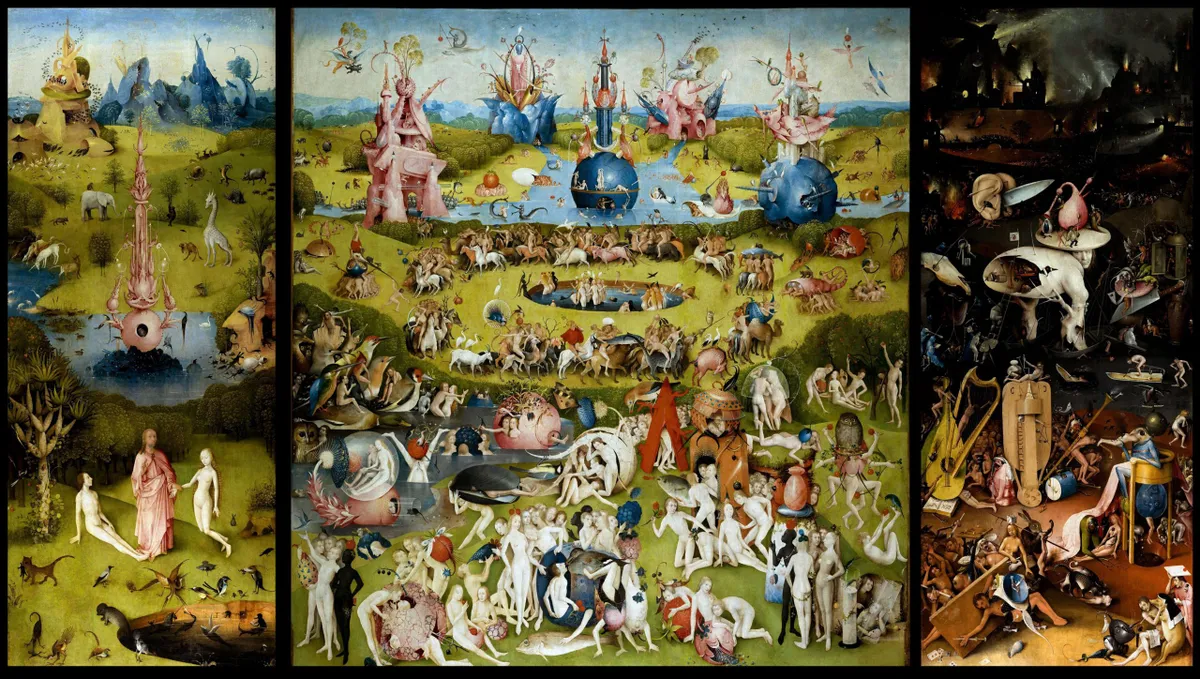
Though he is classed as a master of Early Netherlandish Renaissance art, little is known about Hieronymus Bosch. This makes deciphering his elaborate and intricate triptych oil painting The Garden of Earthly Delights all the more difficult. As shown in earlier medieval scenes of gardens, the garden here works as a symbol, the backdrop to pleasure-seeking and depraved activities. The Garden of Eden is depicted on the left panel and the right-hand panel is thought to depict The Last Judgement.
Adam & Eve by Lucas Cranach the Elder, 1526
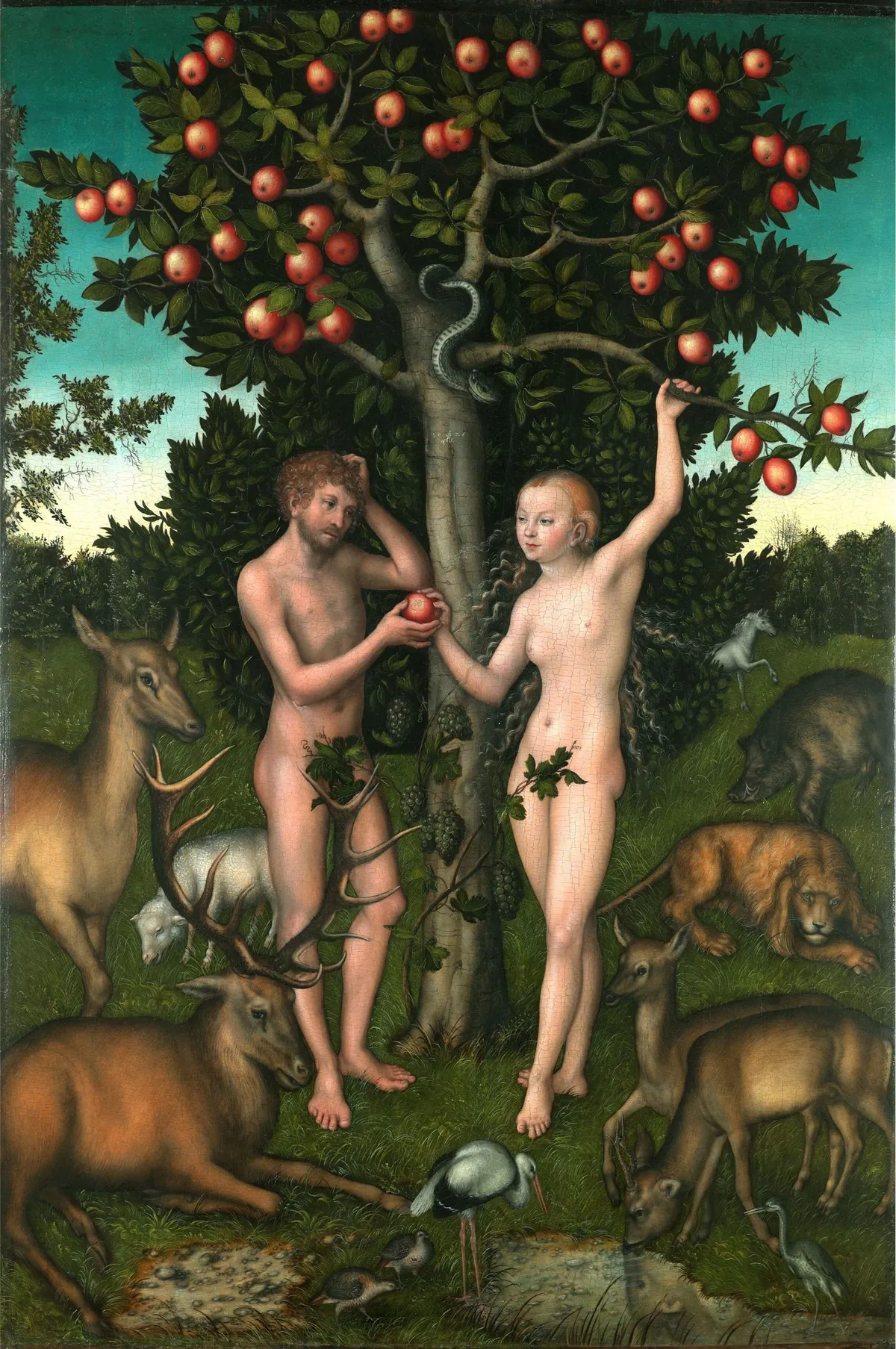
Echoing the scene from the Ancient Greek vase, this painting shows the Garden of Eden and the Tree of Knowledge, complete with apple and serpent. This interpretation is taken from the Book of Genesis and Eve is caught in the act of giving Adam the forbidden fruit, thus succumbing to temptation and prompting their banishment from the Garden of Eden by God.
Romanticism & Impressionism
Golding Constable’s Flower Garden by John Constable, 1815
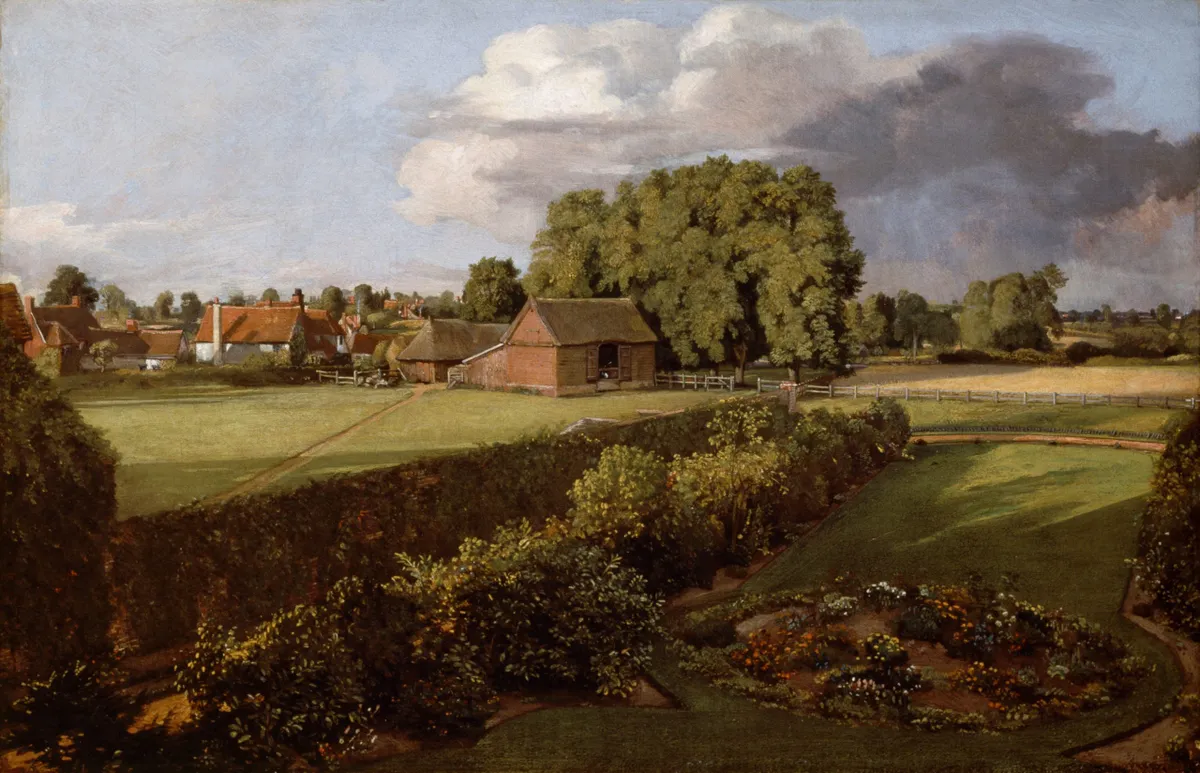
This painting depicts the artist’s family home and vegetable garden, planted by his mother, in East Bergholt, Suffolk. Constable painted this scene in between the deaths of his parents; his mother in February 1815 and his father in July of the same year, which could account for the looming rain clouds and long shadows. The house was demolished along with its gardens in 1839.
Le déjeuner: panneau décoratif by Claude Monet, 1873

Perhaps the most familiar painter when it comes to gardens in art, is Claude Monet. And this painting is classic example of why. The artist has centred on a shady spot in the garden, where a table has been laid out for a casual lunch. Empty glasses and a hat hanging in the tree branches adds to the hazy, relaxed summer scene. You can almost hear the chatter of the women in the background and the birds chirruping.
The Garden of Saint-Paul Hospital by Vincent van Gogh, 1889
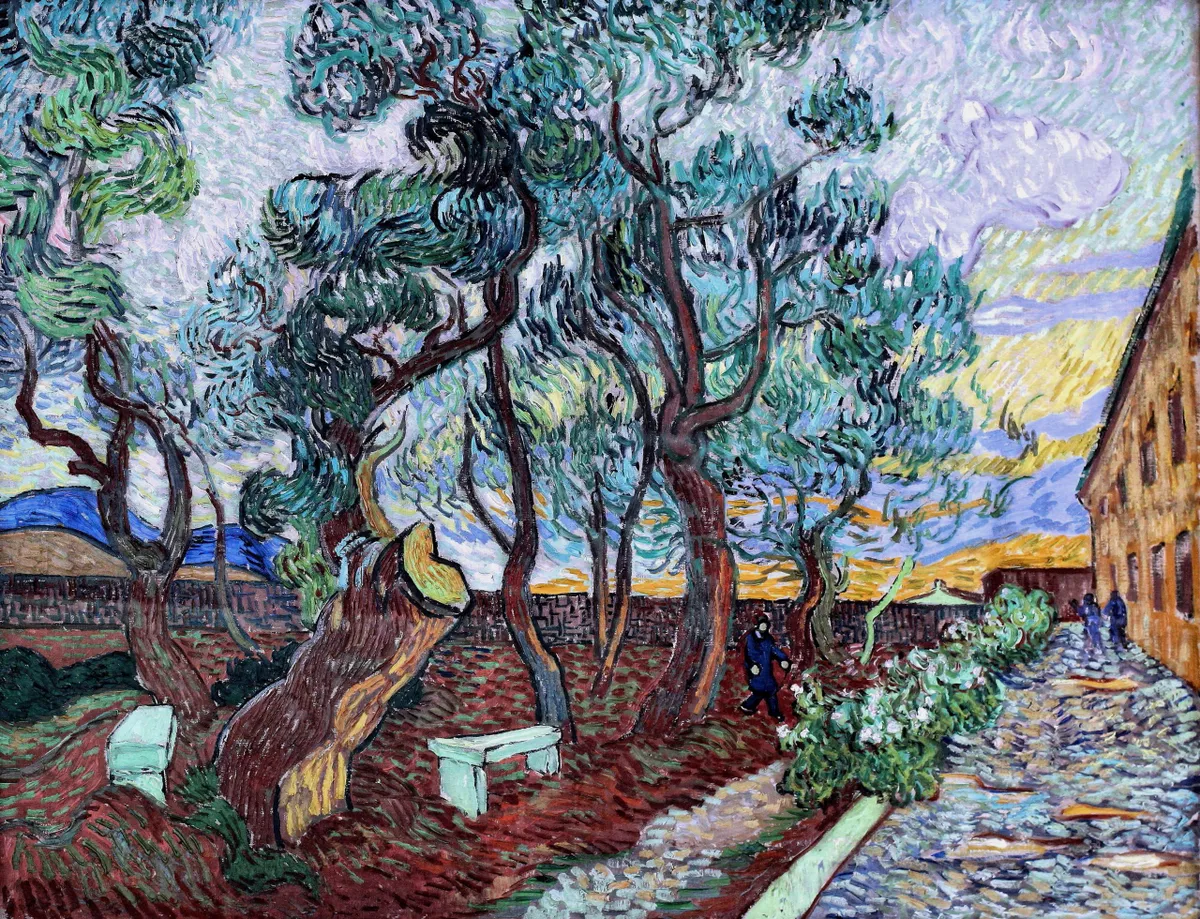
This painting was made during Van Gogh’s stay in the asylum at Saint-Remy in the south of France. Whilst at the asylum, Van Gogh was not allowed to leave the grounds so his work in this period centred solely on the hospital and its surrounding gardens. Although nature was often a solace to him during his illness, this painting is a clear reflection of his melancholy, with the vacant benches and empty horizon beyond the trees offering a sense of loneliness.
Plum Trees in Blossom by Camille Pissarro, 1894
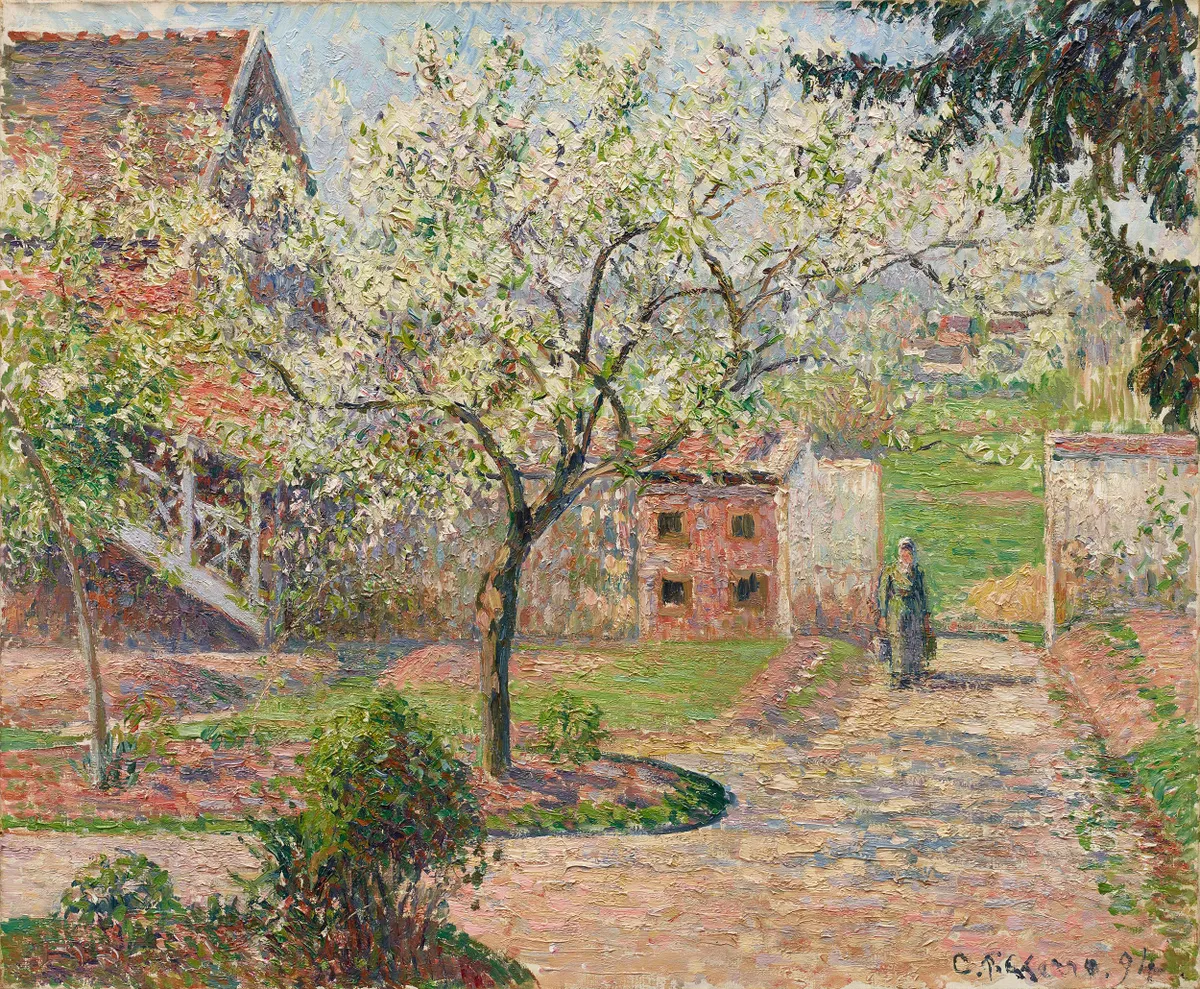
A blossoming plum tree is the centre of attention in this painting by the father of Impressionism, Camille Pissarro, who was interested in depicting everyday life in outdoor surroundings. The family house and garden in Éragny, north-west of Paris, is shown here. Spring light showers the tree and highlights the shades and textures in the garden.
Post-Impressionism & Modernism
Flower Garden by Gustav Klimt by Gustav Klimt, 1906
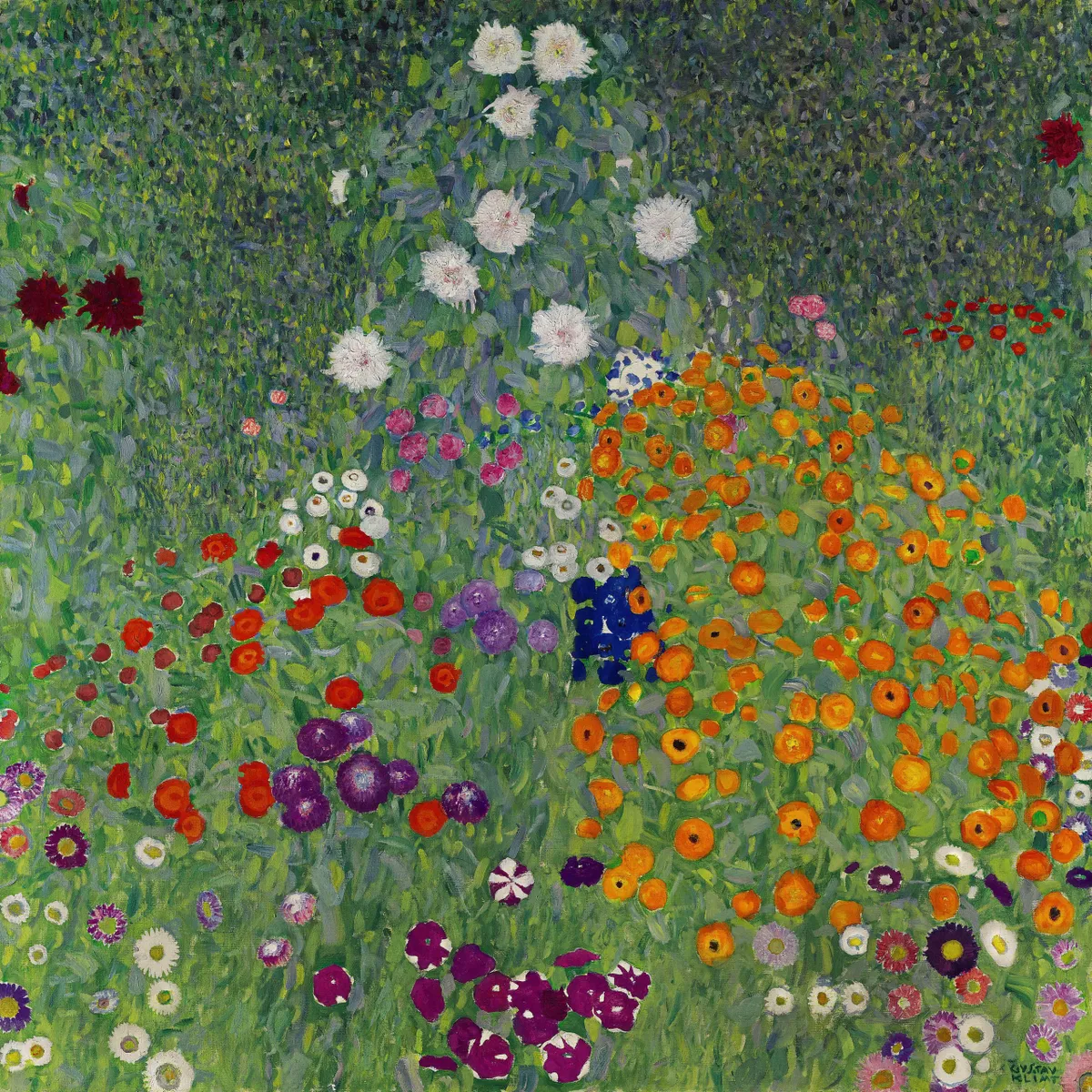
White flower sit on top of a pyramid of brightly coloured blooms in this painting by Gustav Klimt. Flower Garden showcases his floral impressionist style, which could have been inspired by Van Gogh, who he had studied. The triangular shaping of the floral arrangement is deliberate; he was fascinated by patterns and mosaics and applied this technique to great effect here.
Summer Doorway with African Lilies by Phyllis Dodd, c. 1948
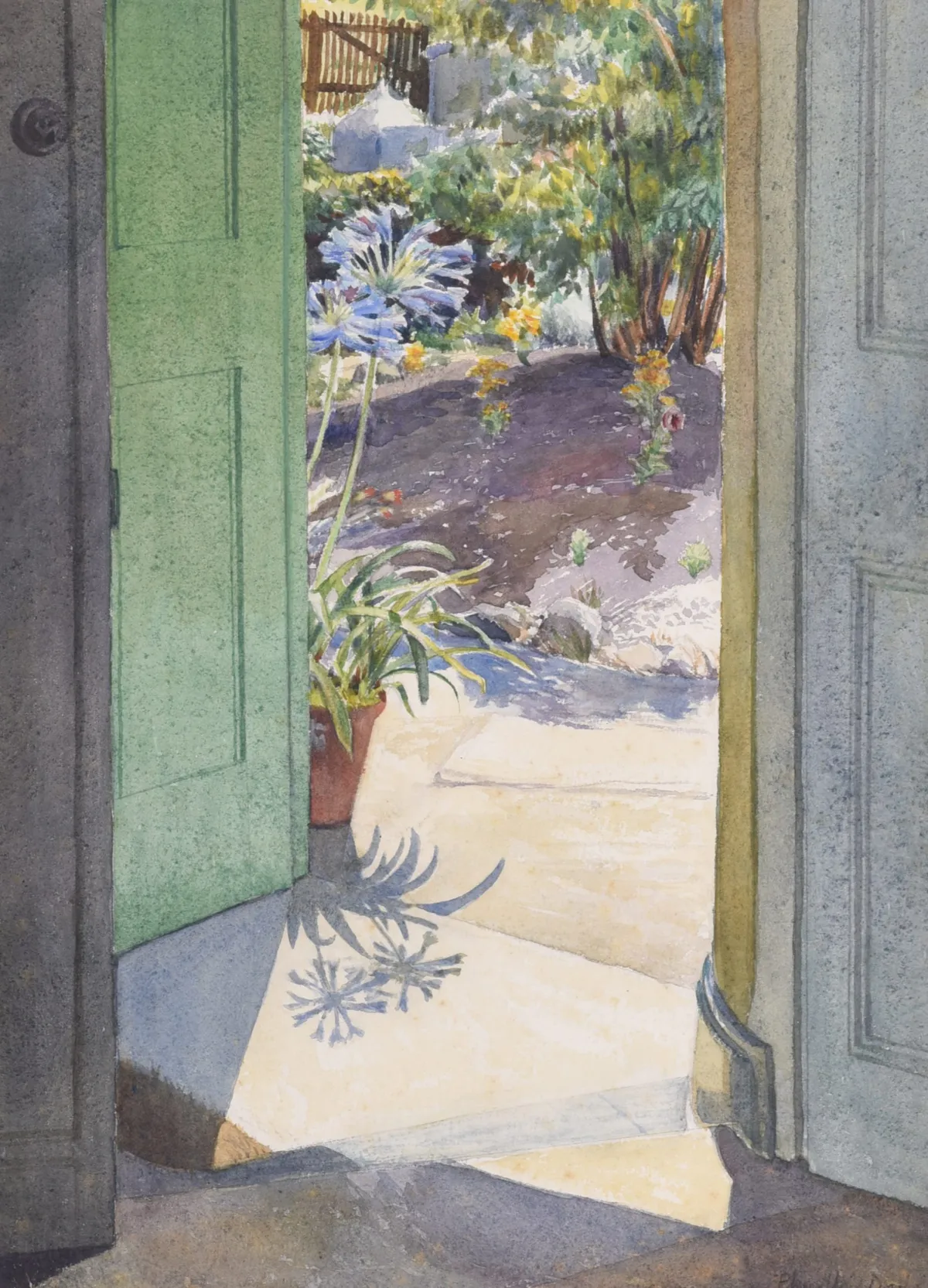
In the peaceful, but often troubled aftermath of the two World Wars, some of Britain’s most talented and prolific artists were drawn to the calm beauty of their gardens for inspiration and solace. Here, painted just a few years after the Second World War, British artist Phyllis Dodd has focused on her cottage entranceway, with summer sun streaming inwards. The shadows of African lilies cross the threshold and we feel invited to step out of the darkness of the house into the comforting warmth and colour of the garden.
Figure for Landscape by Barbara Hepworth, 1959-1960
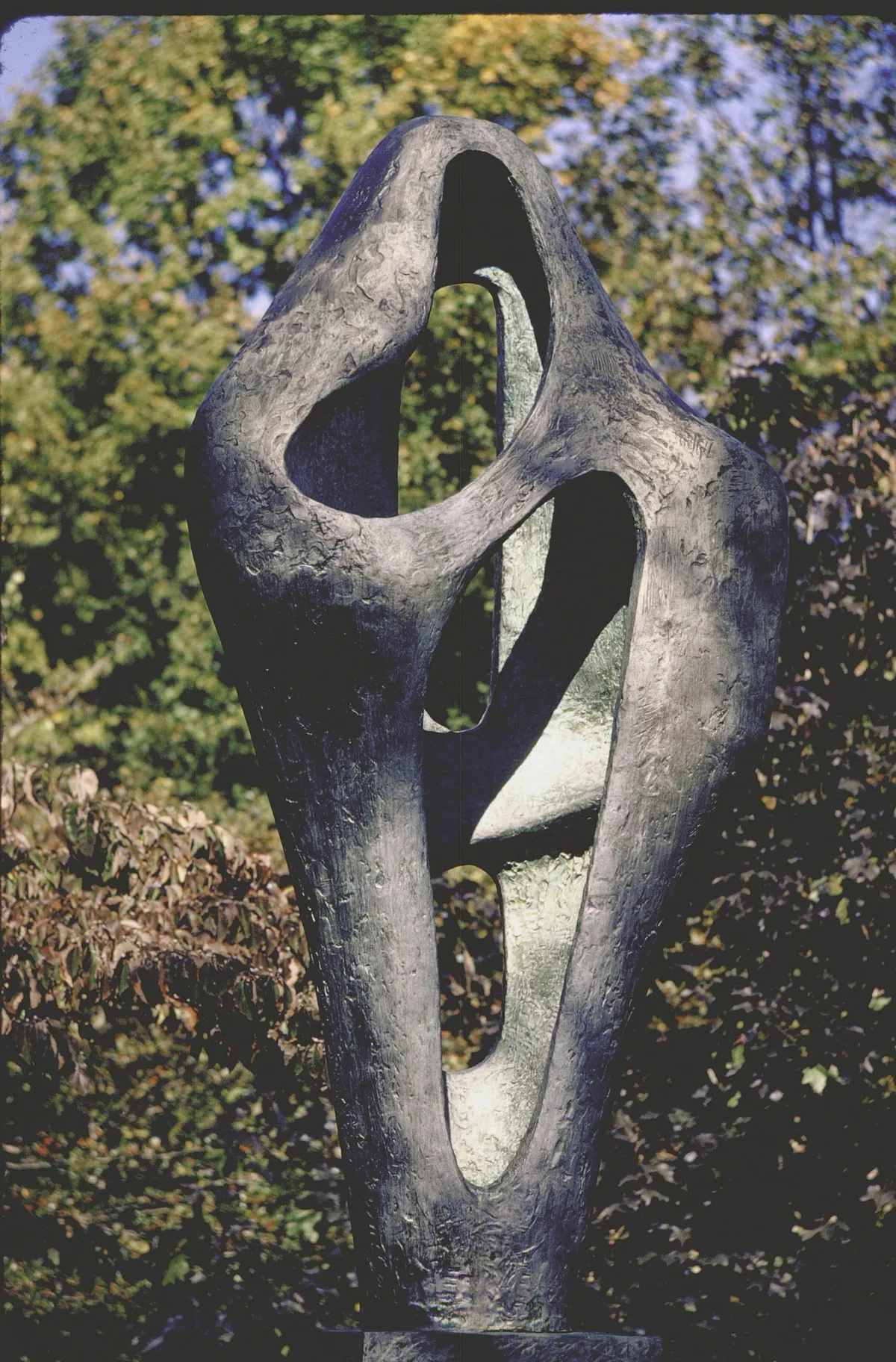
Here we have a very different artistic response to the garden and landscape. From the 1940s onwards, the work of modernist British sculptor, Barbara Hepworth, became increasingly focused on the shapes and forms of the natural landscape. Her home, studio and garden in St. Ives, which she laid out herself with her bronze statues, conveys her continuous appreciation of the landscape and the intrinsic connection between her work and nature.
